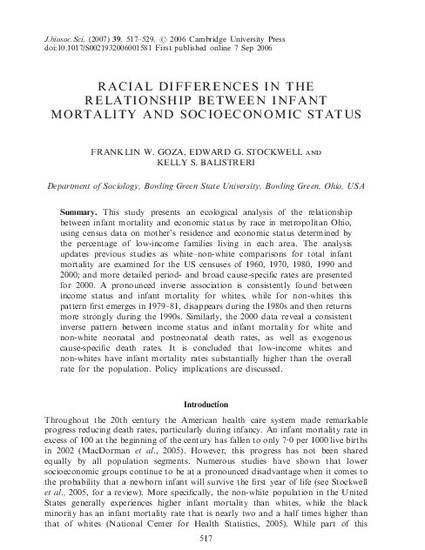
This study presents an ecological analysis of the relationship between infant mortality and economic status by race in metropolitan Ohio, using census data on mother's residence and economic status determined by the percentage of low-income families living in each area. The analysis updates previous studies as white-non-white comparisons for total infant mortality are examined for the US censuses of 1960, 1970, 1980, 1990 and 2000; and more detailed period- and broad cause-specific rates are presented for 2000. A pronounced inverse association is consistently found between income status and infant mortality for whites, while for non-whites this pattern first emerges in 1979-81, disappears during the 1980s and then returns more strongly during the 1990s. Similarly, the 2000 data reveal a consistent inverse pattern between income status and infant mortality for white and non-white neonatal and postneonatal death rates, as well as exogenous cause-specific death rates. It is concluded that low-income whites and non-whites have infant mortality rates substantially higher than the overall rate for the population. Policy implications are discussed.
Available at: http://works.bepress.com/kelly_balistreri/2/
